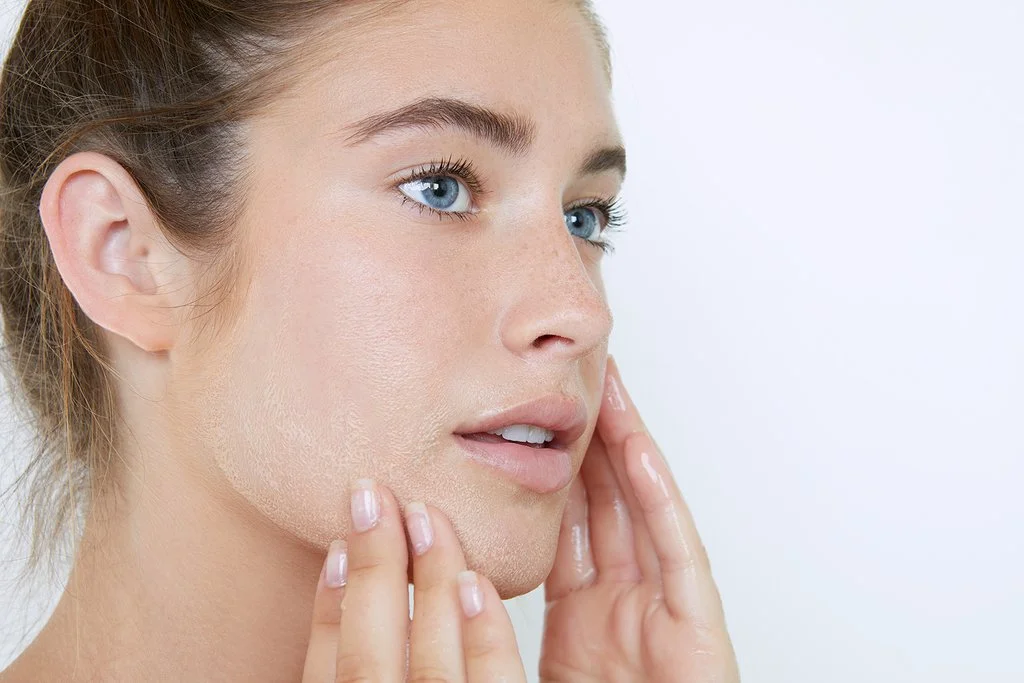Ayurveda is an ancient comprehensive mending system that began in India more than,000 times agone . Its connection can be traced back to the Vedas, which are the foremost written textbooks of Hinduism. Ayurveda was produced by pundits and scholars who studied people’s body and their relationship with the natural world.
The oldest known Ayurvedic textbooks are the Charaka Samhita and the Sushruta Samhita, which were written in the Sanskrit language about 600 BCE. These textbooks are considered the foundation of Ayurvedic drug and describe the introductory features of Ayurveda, including the three doshas Vata, Pitta, and Kapha, the use of sauces and minerals for medicinal purposes.
Over the numerous centuries, Ayurveda continue to expand in fashionability and was determined by other medical systems similar as Greek and Chinese remedy. Ayurvedic scholars and experimenters produced a vast body of knowledge and literature on different aspects of health and heartiness, including herbal drug, diet, nutrition, massage, yoga, contemplation, and detoxification.
During colonizer times in India, Ayurveda faced numerous challenges and lost too important of its influence as a launch of the preface of Western drug. still, in the 20th century, Ayurveda endured a survival reanimation and is now mentioned as an important part of India’s artistic heritage and a value system of natural mending.
moment, Ayurveda is rehearsed each around the world and is mentioned by the World Health Organization as a traditional system of drug. Its comprehensive approach to health and heartiness continues to attract further people who want to seek natural, safe, and effective stylish ways to support their health and well- being.
What Is Ayurveda?
The word “ Ayurveda ” is deduced from the Sanskrit words “ ayu ” which means life, and “ Veda ” which is known as knowledge. It’s believed one of the world’s foremost medical systems and now is still extensively rehearsed in numerous different corridor of the world.
At its purpose, Ayurveda is a comprehensive approach to health and heartiness that focuses on persisting balance and harmony in the body, spirit, and mind. According to the Ayurvedic system, each person is unique and has their own specific constitution or “ dosha ” that controls their physical, internal, and emotional aspects. There are three major primary doshas Vata, Pitta, and Kapha, and utmost people have a sequence of two or further of these doshas in different degrees.
Ayurvedic treatments and practices purpose to balance the doshas through different ways similar as diet, life variations, yoga, contemplation, herbal remedies, massage, and detoxification. Ayurveda maintains forestallment and believes that maintaining balance and harmony within the body can help help complaint and promote optimal health.
Ayurveda has gained fashionability each over the world in recent times as a reciprocal or indispensable approach to traditional drug. While it isn’t an volition to medical treatment. Ayurveda can be used in confluence with conventional drug to support overall health and well- being.
Also Read: 10 benefits of eating roasted gram – wellhealthorganic.org
What’s ayurveda regale?
Ayurveda is the oldest wisdom of health and heartiness, started in India. It centres around balance and harmony with nature, which can be set up through eating a balanced diet. An Ayurvedic regale is a veritably important part of this practice, as it’s intended to help you restore balance in your body while nourishing yourself with healthy food.
An Ayurvedic regale consists of foods that are large in nutritive value, as well as being cooked with necessary flavours and spices that are allowed to prop the digestion system and metabolism. Fruits and vegetables take centre stage alongside whole grains like quinoa or buckwheat. Healthy fats similar as olive oil painting or sesame oil painting can also be added for flavour. An Ayurvedic regale also generally avoids reused foods, dairy products and caffeine- containing potables similar as coffee or soda pop.
Ayurvedic Treatment
Ayurvedic treatment is a comprehensive approach that purpose to balance the doshas Vata, Pitta, and Kapha, And promote overall health and well- being. The ayurvedic treatment contains a variety of ways, including
- Diet and life variations: Ayurveda places great attention on diet and life as the main factors in maintaining health and securing from complaint. Ayurvedic experimenters may recommend specific foods, spices, and herbal remedies to maintain the doshas and ameliorate overall health.
- Herbal remedies: Ayurveda uses a vast range of sauces and herbal phrasings to treat different health conditions. These remedies are frequently reused in the form of maquillages, capsules, or teas.
- Yoga and contemplation: Ayurveda recognizes mind- to- body contact. And indicates the significance of internal and emotional well- being. Yoga and contemplation are stylish practices that can help lose stress, ameliorate mood, and promote relaxation.
- Massage and other body curatives: Ayurveda uses different massage ways. Other body curatives ameliorate rotation, lose muscle pressure, and boost relaxation.
- Detoxification: Ayurveda places great emphasis on detoxification and sanctification to remove poisons from the body and boost overall health.
- Ayurvedic surgery: In plus to the below citation ways, Ayurveda also has a custom of surgical procedures that are grounded on Ayurvedic features.
It’s veritably important to note that Ayurvedic treatment shouldn’t be used as an volition to medical treatment, and it’s stylish to consult with a largely good Ayurvedic experimenter before using any Ayurvedic remedies or treatments, simply if you have any health problem or medical conditions.
Vata Dosha
Vata Dosha is one of Ayurveda’s three doshas, which are Vata, Kapha, and Pitta. Vata Dosha displays the rudiments of air and space. It’s veritably important for movement, both physical and internal. When Vata Dosha is in balance, it boosts creativity, internal alertness or health, and overall vitality. still, when Vata Dosha becomes imbalanced, it can beget a range of health problems, including anxiety, wakefulness, constipation, dry skin, and common pain.
bandy below some common characteristics of an individual with a dominant Vata Dosha
- Thin, light figure
- Dry skin and hair
- Cold hands and bases
- Irregular digestion and appetite
- The tendency towards anxiety and worry
- Creative and imaginative
- Likes change and new gests
- Tends to be active and restless
- Sensitive to cold, wind, and noise
- Quick thinking and fast- paced
To balance Vata Dosha, Ayurvedic experimenters may define a Vata- pacifying diet that contains warm, nutritional foods, and spices, like gusto, cumin, and cardamom. life adaptation may also be recommended, similar as establishing a regular routine, getting enough rest, and probing relaxation ways like yoga and contemplation. Herbal remedies may also be recommended to support Vata balance, similar as ashwagandha, brahmi, and Shatavari.
Also Read: 15 Amazing Advantages of Guava Fruit Juice: The Secret to Good Health
Pitta Dosha
Pitta Dosha is one of Ayurveda’s three doshas, which are Pitta, Vata, and Kapha. Pitta Dosha symbolizes the rudiments of fire and water. It’s important for digestion, metabolism, and metamorphosis in the body. When Pitta Dosha is in balance, it promotes a healthy appetite, a good digestion system, and a strong vulnerable system. still, when Pitta Dosha is imbalanced, it can also beget health issues, including inflammation, heartburn, skin rashes, and wrathfulness.
Then are mention some important characteristics of an individual with a dominant Pitta Dosha
- Medium figure and weight
- Warm skin and a tendency to sweat
- Strong appetite and digestion
- Sharp and quick thinking
- Ambitious and thing- acquainted
- The tendency towards wrathfulness and perversity
- Prefers cool surroundings and foods
- Prone to skin rashes and acne
- Strong and violent feelings
- conclusive and eloquent
To balance Pitta Dosha, Ayurvedic experimenters may define a Pitta- pacifying diet that includes cooling, refreshing foods and spices, similar as cilantro, fennel, and mint. life variations may also be recommended, similar as avoiding overheating and inordinate sun exposure, probing stress- reducing ways like yoga, and contemplation, and getting enough rest. Herbal remedies may also be recommended to support Pitta balance, similar as aloe vera, neem, and Brahmi.
Kapha Dosha
Kapha Dosha is one of Ayurveda’s three doshas, which are Vata, Pitta, and Kapha. Kapha Dosha symbolizes the rudiments of earth and water, and it’s veritably important for structure, stability, and lubrication in the body. When Kapha Dosha is in balance, it promotes strength, calmness, and stability. still, when Kapha Dosha becomes imbalanced, it can beget a range of health problems, including weight gain, traffic, languor, and depression.
Then are bandied below common features of an individual with a dominant Kapha Dosha
- Heavy, solid figure and tendency towards weight gain
- Soft, smooth skin and hair
- Steady digestion and appetite
- Calm and predicated nature
- The tendency towards attachment and possessiveness
- Prone to languor and promptness
- Prefers warm, dry surroundings and foods
- Prone to traffic and disinclinations
- Good memory and retention
- pious and reliable
To balance Kapha Dosha, Ayurvedic experimenters may recommend a Kapha- pacifying diet that includes light, warming foods, and spices, similar as gusto, black pepper, and turmeric. life variations may also be recommended, similar as regular exercise, exercising amping and amping ways like yoga and pranayama, and engaging in creative and stimulating conditioning. Herbal remedies may also be recommended to support Kapha balance, similar as gusto, Triphala, and Guggulu.
Uses of Ayurveda
Ayurveda can be used for a vast range of health problems and conditions. Then are discussion of the most common uses of Ayurveda
- health and heartiness: Ayurveda emphasizes maintaining balance and harmony within the body, mind, and spirit to recommend overall health and well- being.
- Managing habitual conditions: Ayurveda can be used to manage habitual conditions similar as arthritis, asthma, diabetes, and heart complaint.
- perfecting digestive health: Ayurveda offers a comprehensive approach to digestive health by addressing diet, life, and herbal remedies.
- Reducing stress and anxiety: Ayurvedic practices similar as yoga, contemplation, and massage can help lose stress and anxiety.
- Boosting impunity: Ayurveda offers a wide range of herbal remedies and life practices that can help boost your vulnerable system.
- Supporting women’s health: Ayurveda offers technical treatments for women’s health enterprises similar as menstrual diseases, menopause, and fertility issues.
- Managing skin conditions: Ayurveda offers a range of herbal remedies and treatments for skin conditions similar as acne, eczema, and psoriasis.
- Supporting internal health: Ayurveda offers a comprehensive approach to internal health by addressing diet, life, and internal and emotional well- being.
It’s veritably important to note that Ayurveda shouldn’t be used as a cover for medical treatment, and it’s stylish to consult with good healthcare experimenters before using Ayurvedic remedies or treatments, especially if you have any health problems or medical conditions.
Does It Work?
In India and others each over the world, Ayurveda has been rehearsed for thousands of times. numerous people have described positive results from Ayurvedic treatments despite limited scientific exploration on their effectiveness.
numerous studies have shown that Ayurvedic treatments, similar as herbal remedies and massage remedy, may be effective in treating numerous health conditions, including
- Digestive diseases
- Arthritis
- Anxiety and depression
- Asthma
- Skin conditions like eczema and psoriasis
In addition, Ayurveda indicates the significance of a healthy diet and life, which are known to have a positive impact on overall health and well- being.
still, it’s most important to note that Ayurvedic treatments shouldn’t be used as a cover for conventional medical care. It’s important to consult with largely good Ayurvedic experimenters as well as healthcare providers to insure that all treatments are safe to use and good for your individual requirements.
Overall, while further exploration is demanded to fully understand the effectiveness of Ayurveda regale, numerous people have set up it to be a useful tool for promoting health and well- being.
Conclusion
In conclusion, Ayurveda is an antique system of restorative and heartiness that began in India more than,000 times agone . It’s established on the features that each existent is unique and has a unique constitution or dosha, which fully determines their physical, internal, and emotional characteristics.
Ayurveda regale offers a comprehensive approach to health and heartiness that contains diet, herbal remedies, massage, contemplation, life variations, and other natural curatives. By balancing the doshas, Ayurveda target to restore, and maintain health to help complaint.
moment, Ayurveda is gaining fashionability each over the world as people seek more natural and comprehensive approaches to health and heartiness. While Ayurveda can be used to treat numerous health conditions, it’s also useful for maintaining overall well- being and precluding illness.
Then are some frequently asked questions about Ayurveda
What’s the main thing of Ayurveda?
The main thing of Ayurveda is to maintain health and save from complaint by restoring balance, and harmony to the body, mind, and spirit.
How is Ayurveda different from Western drug?
Ayurveda is a comprehensive approach to health that takes into account the whole person, including their physical, internal, emotional, and spiritual well- being. Western tends to concentrate more on treating specific symptoms or conditions with drug or surgery.
Can Ayurveda be used to treat specific health conditions?
Yes, Ayurveda can be used to treat specific health conditions, but it’s veritably important to consult with largely good Ayurvedic experimenters as well as a healthcare provider to insure that all treatments are fully safe and applicable for your individual requirements.
Is Ayurveda safe?
Ayurveda is principally considered safe when rehearsed by good experimenters and when used in confluence with conventional medical care. still, like any medical treatment, there can be pitfalls and implicit side goods, so it’s important to bandy all treatments with a good guru.
How is my Ayurvedic constitution determined?
Your Ayurvedic constitution, or dosha, is determined through a discussion with an Ayurvedic guru, who’ll ask you questions about your physical, internal, and emotional characteristics, as well as your life habits and medical history.
What types of treatments are used in Ayurveda?
Ayurvedic treatments include herbal remedies, massage remedy, contemplation, yoga, salutary and life variations, and other curatives.







